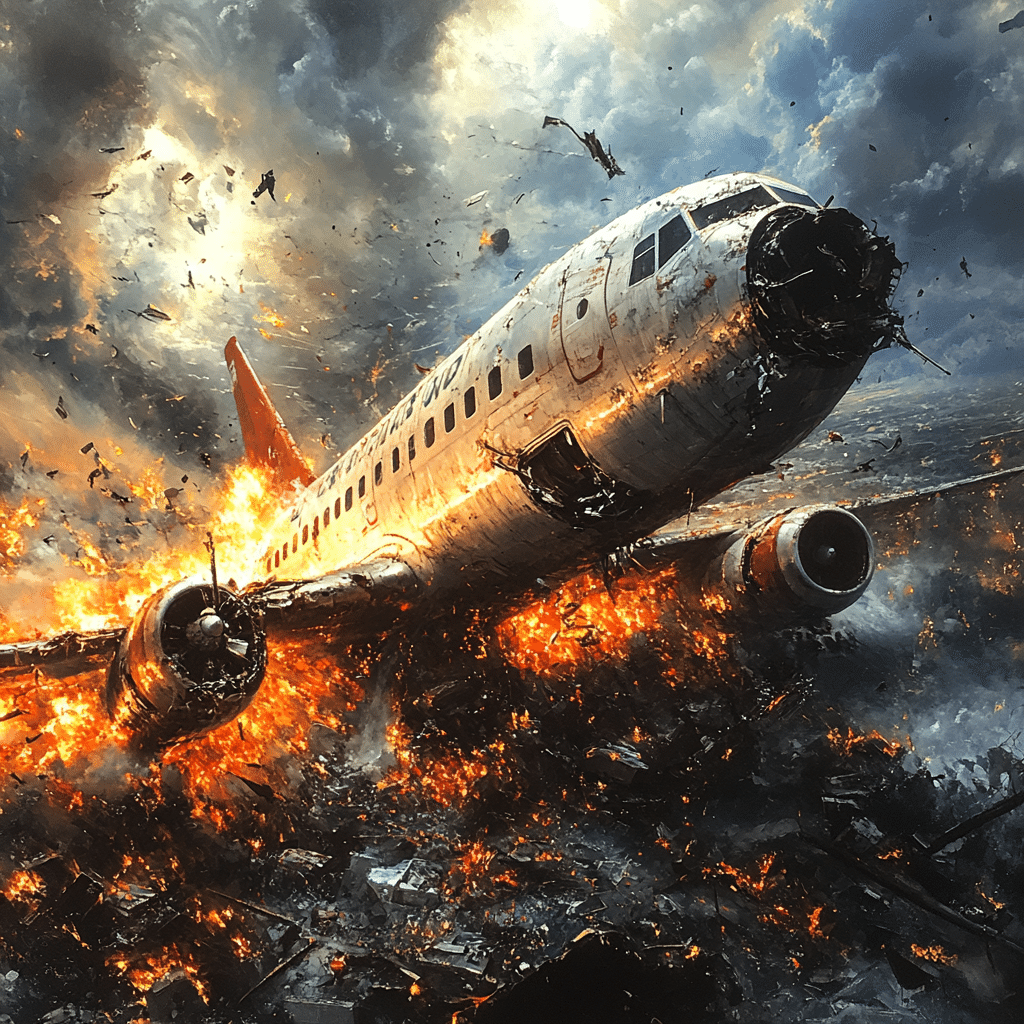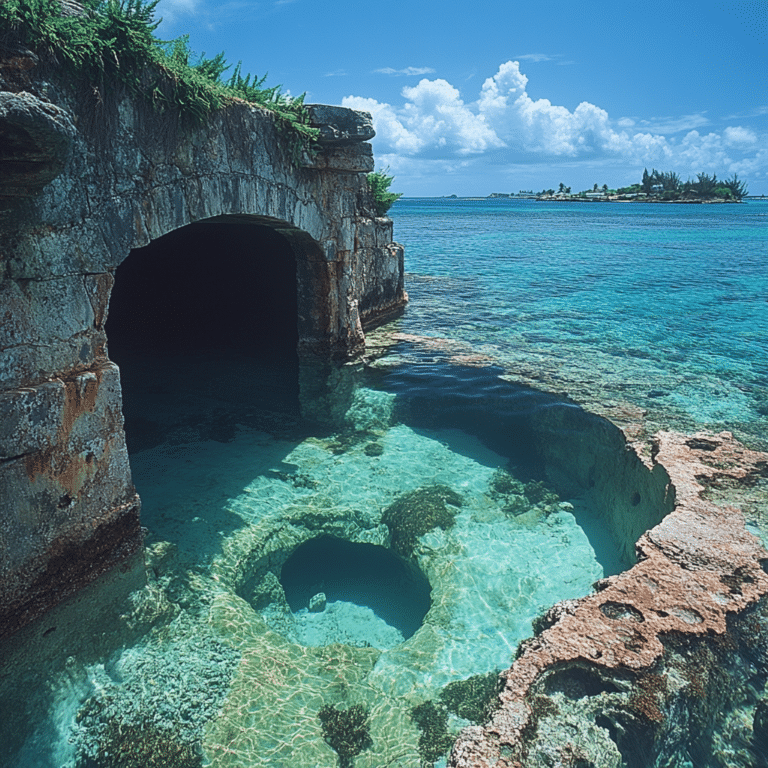On March 27, 1977, the aviation world experienced its darkest hour, with an airplane crash that forever marked history. The Tenerife airport disaster remains the deadliest aviation accident ever, claiming a staggering 583 lives when two Boeing 747s collided on a foggy runway at Los Rodeos Airport in the Canary Islands. This incomprehensible tragedy not only spotlighted serious deficiencies in airport safety protocols but also ignited discussions about air traffic control improvements. The sheer scale of the loss resonates deeply, underscoring the need for constant vigilance and reform in aviation safety.
7 Key Factors Leading to the Tenerife Airplane Crash
One of the most devastating factors contributing to this airplane crash was the dense fog enveloping the airport that day. The pilots found it nearly impossible to navigate accurately, making the already complex operations prone to catastrophic errors. With visibility severely hampered, the situation escalated alarmingly.
Who could have imagined that a simple lack of clear communication could lead to such tragedy? Air traffic control clearance mishaps played a pivotal role in the disaster. The KLM flight crew misunderstood their clearance to take off, leading them into the direct path of Pan Am Flight 1736. This heartbreaking mistake illustrates just how critical precise communication is in aviation, especially under stress.
The KLM captain’s intense authoritative demeanor stifled crucial input from his crew, resulting in a breakdown of cockpit resource management. This situation highlights the need for collaborative decision-making in high-stress environments. Just as our society must encourage open discourse, so too must airline crews foster an environment where every voice can be heard.
With so many planes vying for clearance at a busy airport, both flight crews wildly underestimated collision risks. The tightly packed layout of the airport exacerbated the situation, revealing serious flaws in situational awareness. Honestly, this oversight should serve as a wake-up call for everyone involved in air travel safety—from regulatory bodies to the airlines themselves.
As the fog cleared, the aftermath of the horrific collision revealed gaping holes in emergency response protocols. The airport was simply overwhelmed, and the rescue efforts fell far short of what was required. This tragic airplane crash demonstrates a pressing need for enhanced disaster readiness plans—and, frankly, we can’t afford to ignore such lessons in any sector.
The authoritarian culture often found in the aviation industry, particularly within various airlines, affected communication dynamics. Crews might hesitate to question a senior pilot’s decisions. This culture of reluctance poses a threat to safety and highlights the need for critical reform in training programs across the industry.
The fallout from Tenerife didn’t end with the crash. Aviation authorities worldwide recognized the urgent need for significant reforms. They established standardized language in communications and developed improved training for cockpit resource management, reshaping safety protocols that still influence aviation today.

Lessons from the Tenerife Airplane Crash: How They Shape Modern Aviation Safety
The lessons learned from the Tenerife airplane crash echo through time and continue to influence aviation safety measures. This tragedy has directly shaped global aviation safety frameworks, forcing aviation authorities to raise standards for pilot training and streamline communication protocols to resource management. Every possible preventative measure is essential; we must not learn our lessons only in the wake of tragedy.
But it’s not just airplane crashes that grab headlines. Helicopter crashes—often revealing both mechanical failures and human error—highlight the continuous need for rigorous safety practices across all aircraft types. And let’s not forget the bizarre UFO sightings in Missouri. These incidents may seem unrelated, yet they support vigorous debates on safety and transparency in aviation. It’s critical that our air traffic systems keep pace with both technology and emerging phenomena, or we risk repeating the mistakes of the past.
Closing Reflections: The Legacy of the Tenerife Airplane Crash
The unimaginable loss of 583 lives in the Tenerife airplane crash stands as a stark reminder of why we must never take aviation safety for granted. This tragedy underscores the paramount importance of rigorous communication protocols, enhanced crew collaboration, and optimized emergency response systems. Learning and evolving from our past is crucial; this legacy should guide every aviation operation moving forward.
The lessons from this dark chapter live on, pushing both the public and industry leaders toward better practices in ensuring air safety. As the aviation landscape transforms with a wave of new technologies and methods, we must remain steadfast in our commitment to uphold the highest standards. Let us remember the victims of the Tenerife disaster and honor their memory by striving for excellence in every flight operation. In a nutshell, the sky must remain the safest place for all to travel, and ensuring that requires our collective effort and engagement—both on the ground and as informed citizens.

Fascinating Tidbits About the Airplane Crash That Shook the World
A Tragic Day in Aviation History
The catastrophic airplane crash that occurred on March 27, 1977, in Tenerife remains one of the deadliest in history, claiming the lives of 583 people. The aftermath was so devastating that it changed how air traffic control operated globally. Can you imagine the sheer chaos? It was like a vicious storm of human error, weather challenges, and communication breakdowns all colliding. This tragedy led to advancements in safety protocols, ensuring pilots and officials could navigate crises with improved coordination, much needed in today’s industry.
The Stars Who Played After the Crash
Interestingly, the aviation industry wasn’t the only thing affected by this disaster. In the world of entertainment, the tragic plane crash had its impact, too. Just think about it—celebrity performances have been known to stir emotions, like Reba McEntire with her rendition of the national anthem. Such deeply felt performances can remind us of lives lost and the importance of remembering the past, especially on Women ‘s Day, when we salute those who have paved the way for better safety measures and innovations.
Lessons Learned and the Future of Air Travel
In light of such heart-wrenching incidents, today’s airlines have become more vigilant. They utilize advanced technology to ensure safety and efficiency in air travel. A fascinating parallel can be drawn to the way sports legends like Peyton Manning elevate their game, continually adapting and improving. Just like how a Twitter stock price chart can show fluctuating trends, the aviation sector learns from history, striving to prevent a repeat of such calamities. Ultimately, safety is everyone’s responsibility, as we hop on planes for vacations or work trips, flying over places like Newtonmore without a second thought, often forgetting the sacrifices made to get there safely.
So, the next time you board a flight, remember those lost in the tragic airplane crash in Tenerife, and take comfort in knowing that the flying experience has come a long way; we owe it to those who paved the runway for our safe travels.

What was the worst air accident in history?
The worst air accident in history was the Tenerife airport disaster on March 27, 1977, when two Boeing 747s, KLM Flight 4805 and Pan Am Flight 1736, collided on a foggy runway, resulting in 583 fatalities.
What is the most common cause of death in a plane crash?
The most common cause of death in a plane crash is thoracic injury, particularly injuries to the bones of the chest, which occur in about 80% of accident victims, often impacting the cardiovascular system.
Who was the first person to lose their life in a powered airplane?
The first person to lose their life in a powered airplane was U.S. Army Lt. Thomas E. Selfridge, who died in a crash on September 17, 1908, during a demonstration of a modified Wright Brothers aircraft.
Why did Charles Widmore fake the plane crash?
Charles Widmore faked the plane crash to manipulate perceptions and cover up the existence of Oceanic Flight 815, making it look like everyone on board had perished while protecting secrets surrounding the island.
Which airline has 0 crashes?
There isn’t a specific airline with zero crashes, but there are carriers that boast excellent safety records and haven’t had any major incidents in many years.
What is the deadliest plane?
The deadliest plane in history is often considered the Boeing 747, particularly due to the Tenerife disaster, which involved two of these aircraft in a single accident.
What airline has had the most crashes?
The airline with the most crashes is often cited as American Airlines due to the sheer volume of flights they operate, but their accident rate is quite low given the number of flights.
Can turbulence bring down a plane?
Turbulence typically doesn’t bring down a plane; commercial aircraft are designed to withstand significant turbulence, and injuries during turbulence usually occur due to not wearing seatbelts.
What is the #1 cause of plane crashes?
The #1 cause of plane crashes often points to pilot error, though other factors like mechanical failure and weather conditions are also significant contributors.
Who fell out of a plane and survived?
In a remarkable story, a man named Vesna Vulović fell out of a plane in 1972 and survived despite the incredible odds stacked against her.
Who is the oldest person to fly a plane?
The oldest person to fly a plane is 104-year-old David Grotto, who took to the skies in 2019 to mark his passion for aviation and inspiring others.
Who really flew the first plane?
The Wright brothers, Orville and Wilbur Wright, are credited with flying the first successful powered airplane in 1903, specifically the Wright Flyer.
Who was the pilot that jumped out of the plane?
The pilot who famously jumped out of a plane is probably referring to a fictional character in the series “Lost,” but there’s no historical figure widely recognized for such an act.
Why did Charles Widmore get banished?
Charles Widmore was banished due to his actions and conflicts with the island’s other inhabitants, particularly over the manipulation of people connected to the island.
Who put the plane on the bottom of the ocean in Lost?
In “Lost,” the creation of a fake Oceanic Flight 815 was orchestrated by characters, including Charles Widmore, as part of a larger plan involving the island’s secrets.
What was the worst air pollution event in history?
The worst air pollution event in history is often linked to the 1952 Great Smog of London, which claimed thousands of lives and was caused by coal burning and weather conditions trapping pollutants.
What are the worst planes in history?
Some of the worst planes in history include the McDonnell Douglas DC-10 and the Boeing 737 MAX, often due to high-profile incidents and safety concerns.
What was the biggest air pollution crisis in Earth’s history?
The biggest air pollution crisis in Earth’s history is generally considered to be the Industrial Revolution, which dramatically increased fossil fuel use, leading to widespread air quality issues.
Is the Boeing 737 safe?
The Boeing 737 is generally regarded as safe, with millions of flights operating without incident, though safety concerns have arisen with specific models following accidents.

































